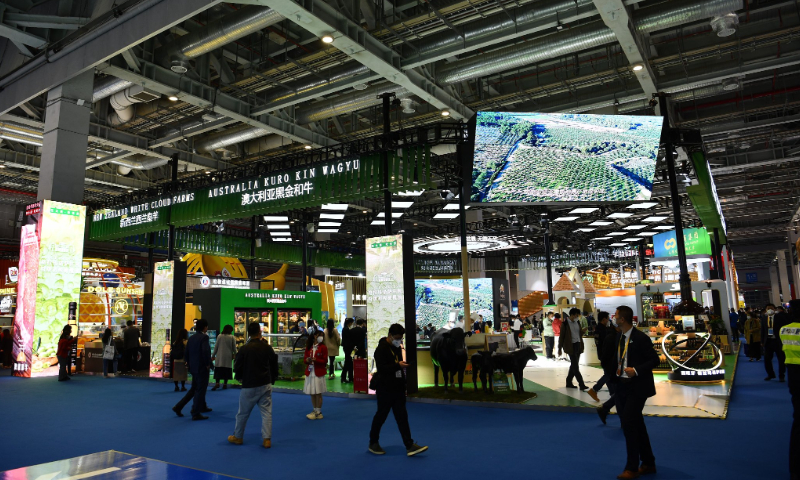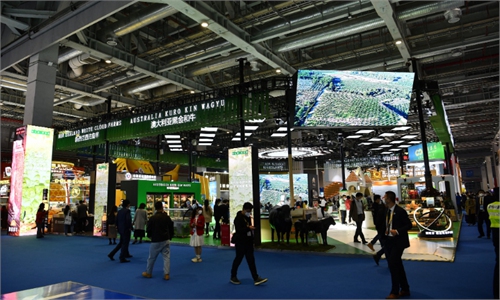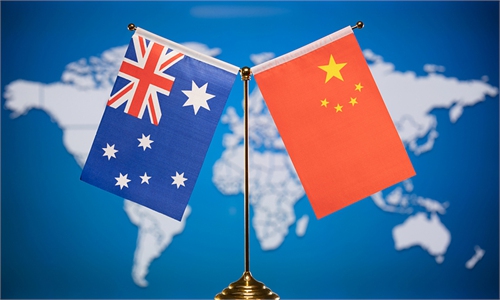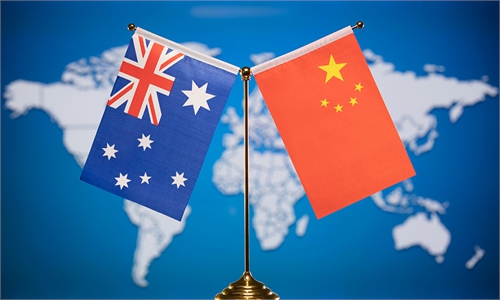
The booth of Australia Kuro Kin Wagyu at the fifth China International Import Expo on November 5, 2022. Photo: VCG
Chinese Premier Li Keqiang met with Australian Prime Minister Anthony Albanese on Saturday in Phnom Penh, Cambodia, sending a fresh message to the businesses amid rising expectations for better bilateral relations.
Bilateral relations fell to the lowest ebb in decades in the past years, so the high-level meetings between the governments of the two countries immediately received a strong welcome from Australian business community.
In an exclusive interview with the Global Times on Monday, Brendan Mason, managing director of AustCham China said that "any effort to improve and normalize relations is highly welcome" by Australian business community, as the efforts from both sides will help the healthy and stable development of Australia-China trade ties.
China's market has played a significant role for Australian companies, as shown by the active participation of Australian business groups at the just-concluded China International Import Expo (CIIE) in Shanghai.
Australian firms were among the most active participants at this year's CIIE, with 64 companies from agricultural products to mining. The CIIE is a good opportunity for Australian companies to meet buyers from all regions of China.
"'Brand Australia' did very well at the CIIE and China's Double 11 shopping festival," Mason said. "The CIIE is an opportunity for companies to reiterate their commitment to the Chinese market. Many Australian companies at this year's CIIE have joined the event since the first expo," he noted.
China and Australia have signed a high-quality bilateral trade agreement in the form of the China Australia Free Trade Agreement (ChAFTA), which has seen the value of Australia's trade with China almost double since the agreement entered into force about seven years ago, according to the chamber.
China is the No.1 export market for Australian iron ore, with more than 60 percent of the ore going to the country.
"Australian companies are optimistic about the opportunities that come from the implementation of the Regional Comprehensive Economic Partnership (RCEP) agreement. With one in five Australian jobs reliant on trade, the RCEP will be crucial for Australia in post-COVID time," Mason said.
While the RCEP does not provide Australia with new tariff reductions beyond those in the ChAFTA, there are some improvements in market access for Australian services providers, including in major areas such as professional services, education, healthcare and transport, he said.
China is top export destination for Australian food and fiber. Australian and Chinese companies are already working together in agricultural technology and food technology solutions.
There are opportunities for Australian companies to invest in food processing operations in China in partnership with local companies and to supply leading technology and know-how to the processing of high-quality food exported from Australia in those facilities, Mason said, noting that "this would allow Australian investors to benefit from the value created from downstream processing and distribution and increase the resilience of the underlying exports."
Across multiple sectors including electricity, mining, manufacturing and agriculture, collaboration in the development and use of cost-effective low emissions technologies and solutions will help yield new opportunities for Chinese and Australian companies, according to AustCham China.
"Opportunities exist across many sectors, and particularly in services, and I am optimistic about the future of the cooperation between Chinese and Australian companies," Mason added.



